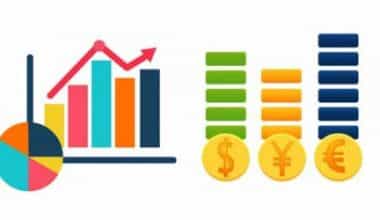Federal bankruptcy courts are in charge of the legal procedure of bankruptcy. It is intended to assist people and organizations in paying off some or all of their debt or helping them repay some of what they owe. In this article, you’ll learn about how bankruptcies work in Canada, Ontario, Australia, and Alberta, as well as how bankruptcies work for companies.
You might be able to seek debt relief through bankruptcy, but you should be aware that this will have a negative, long-term impact on your credit. For seven to ten years after filing for bankruptcy, it will still show up on your credit record, making it harder for you to open new credit card accounts and get accepted for low-interest loans.
How Bankruptcies Work
A person or business may file for bankruptcy if they are unable to pay their debts or other commitments. For those who are struggling to make ends meet, it offers a new beginning.
An opportunity to start over is provided through bankruptcy by wiping off unmanageable debts. In the meantime, creditors may be able to receive some payment based on the person’s or company’s liquidated assets.
The opportunity to declare bankruptcy should help the economy as a whole by giving people and businesses another chance to access finance. It may also assist creditors in recovering some of the loan repayment.
Federal courts handle all bankruptcy matters in the United States. A bankruptcy judge renders judgments, such as determining whether a debtor is eligible to file for bankruptcy and whether their debts should be discharged.
An officer provided by the Department of Justice’s United States Trustee Program to administer bankruptcy cases on behalf of the estate of the debtor is known as a trustee. Unless a creditor objects, the debtor and the judge often don’t discuss it. The debtor gets released from their debt responsibilities after the bankruptcy process is finished.
How Bankruptcies Work in Canada
We’ve put together a tutorial based on frequently asked questions if you’re curious about how bankruptcies work in Canada. Simply explained, declaring bankruptcy is a legal procedure that relieves you of the need to make payments to your unsecured creditors. Usually, this is for those who are unable to pay off their debt. The laws and processes of how bankruptcies work in Canada are intended to “relieve honest but unfortunate debtors of their debts.”
The most obvious benefit of filing for bankruptcy is that it discharges the majority of your debt, including credit card debt, bank loans, company obligations, income tax debt, payday loans, and consumer debt.
It might be difficult to decide whether to file for bankruptcy, but there are a few indications that you should begin your search for a Trustee. If you’ve been denied extended credit more than once and you’re using one credit card to pay for another, You frequently use payday loans to get by each month. If you don’t make payments, your accounts will be in arrears. It’s time to proceed with meeting a Trustee if this describes you.
Your home, vehicles, and investments are often yours to retain. All legal proceedings, wages, and judgments will end after you’ve filed. Although bankruptcy is not free, for some people, it is cheaper than their current debt. The fee to file is controlled at the federal level and is based on household income, the number of dependents, and the value of your assets.
There is simply no other method that eliminates debt as effectively when you are unable to pay as bankruptcy, even though it is frequently a final alternative. We want to give you the knowledge you need to make an informed decision as Licensed Insolvency Trustees.
How Bankruptcies Work in Ontario
There are some regional differences in the bankruptcy procedure. The following are the stages you might anticipate when you declare bankruptcy in Ontario:
#1. Consultation phase
Meeting with a Licensed Insolvency Trustee (LIT) in Ontario for an initial consultation is the first stage in the bankruptcy procedure.
The goal of this conference is for you to share as much information as you can about your financial condition and the several debt-reduction strategies you have attempted before thinking about filing for bankruptcy.
Your Licensed Insolvency Trustee will tell you about your alternatives and suggest what they believe should be your next course of action once they are satisfied that they have all the information they require.
#2. Document preparation
Your Licensed Insolvency Trustee will create all the necessary paperwork for you to formally file for bankruptcy if you decide to do so.
The paperwork will be submitted to the Office of the Superintendent of Bankruptcy (OSB) after you have signed it.
#3. A warning to creditors
Your unsecured creditors will be notified after the paperwork has been submitted to the Office of the Superintendent of Bankruptcy (OSB), and all correspondence and legal actions, such as wage garnishments, will be halted, prohibiting further action against you. An official stay of proceedings is what this is.
Inform your Licensed Insolvency Trustees as soon as possible if you continue to receive calls or other forms of harassment from your creditors or a debt collection agency so that they can take the required action to cease the harassment.
#4. Assets
Your assets are shielded from creditors under Ontario bankruptcy law. A few items are also thought to be exempt from your bankruptcy estate.
If you have any non-exempt assets, you can work out a plan with your licensed insolvency trustee to recompense your estate for them.
When you meet with your Licensed Insolvency Trustee for the first time, they will explain how your assets are affected by bankruptcy.
#5. Discharge
Depending on whether you have filed for bankruptcy before and whether your income exceeds a particular amount, you will be officially discharged and released from your debts in 9, 21, 24, or 36 months if you have fulfilled your responsibilities when your bankruptcy period ends.
How Bankruptcies Work for Companies
If a firm you’ve invested in declares bankruptcy, a variety of factors, including the bankruptcy’s specifics and the kind of investment you own, will determine whether or not you get your money back.
When a company is profitable and growing, nobody considers declaring bankruptcy. The possibility of bankruptcy comes almost always as a result of issues with your company. You might be in the decline phase, the final stage of the business life cycle, where you have lost your competitive advantage and are prepared to leave the market. Another possibility is that you made blunders when your company was first starting and were unable to find a means to make money or gather a strong staff.
If your company fails or you are unable to pay your debts, corporate bankruptcy is designed to protect your assets. Fundamentally, declaring bankruptcy for your organization enables you to move past your errors and concentrate on improvement. You must think of bankruptcy as a fresh start, regardless of whether that progress is starting a different firm, revamping the one you already have, or quitting entrepreneurship altogether to find a job where you can do what you love.
Now that you are aware of the many kinds of business bankruptcy and the scenarios in which filing for bankruptcy is an option, let’s take a deeper look at the procedure. The U.S. Trustee Program, which is federally regulated, is in charge of commercial bankruptcy filings. To ensure a fair outcome in any bankruptcy, the trustee will appoint a committee to represent the company’s investors and creditors. Even if it might not seem like it at the time, the main objective of company bankruptcy is to assist you in regaining financial stability.
How Bankruptcies Work Australia
Many people view bankruptcy as an admission of failure, giving it a bad image. However, filing for bankruptcy may occasionally be your best option for improving your financial situation and regaining control over your life. If you have questions about how bankrupcies work in Australia, MyBudget has assisted over 130,000 people—some of whom have already filed for bankruptcy or were on the ve7rge of doing so—to live their lives free from financial stress. To examine how bankruptcies work in Australia and respond to some often-asked issues, we spoke with the great and skilled insolvency team at MyBudget.
A legal procedure called personal bankruptcy allows people to declare that they will not be able to pay their debts as they become due. In Australia, the Australian Financial Security Authority (AFSA) is in charge of handling a lot of personal bankruptcies; in other instances, a private trustee is in charge of handling the bankruptcy.
If a person is unable to make their repayments when they are due (insolvent), filing for bankruptcy is an alternative that may be taken into account under Australian bankruptcy laws.
The trustee notifies all creditors after declaring bankruptcy. The majority of unsecured creditors are unable to recover the loan. A dividend payment from the trustee may be made to the creditors in various circumstances where the bankrupt has assets over specific indexed amounts.
Although filing for bankruptcy may offer you relief, it does carry major repercussions that could have an impact on your future. Knowing these repercussions can help you decide if this is the right course of action for you and allow you to make an informed choice.
How long does bankruptcy last in Australia?
Last but not least, it’s crucial to remember that bankruptcy only lasts for three years and one day after it is accepted. It stays on your credit report for an additional two years and is permanently listed on the National Personal Insolvency Index (NPII).
How Bankruptcies Work in Alberta
Numerous Albertans go through the simple legal process of declaring bankruptcy every year. Declaring bankruptcy is often the wisest course of action for persons who have no practical way to pay their debts and interest fees.
In contrast to a single occurrence or action, the specific circumstances that give rise to these financial difficulties are generally the product of compounding variables over time. It’s not an easy choice to start the bankruptcy procedure. Regardless of the situation, anyone starting this process deserves praise for their fortitude in making a sound decision.
There are five steps to how bankruptcies work in Alberta.
#Step 1: Locate and choose an Alberta-licensed insolvency trustee.
Finding an insolvency expert to assess your financial status and give you competent guidance on how to address your debt is the first stage in the bankruptcy procedure. An individual who holds a license from the Office of the Superintendent of Bankruptcy of the federal government is known as an Alberta Licensed Insolvency Trustee. Searching the Federal Government’s directory of Licensed Insolvency Trustees is the quickest way to find a licensed insolvency trustee close to you. BDO Canada, Deloitte, MNP Ltd., Grant Thornton, and Allan Marshall & Associates Inc. are the five businesses with licensed insolvency trustees on staff.
#Step 2. Gathering and drafting bankruptcy documentation
A person cannot file for bankruptcy on their own; instead, they must engage with a Licensed Insolvency Trustee to handle the procedure. A certified insolvency trustee determines the total value of all assets, including a home, car, registered retirement savings plan (RRSP), employer pension, and cash on hand.
Additionally, they will add up all liabilities, secured and unsecured, including mortgages, credit cards, lines of credit, and previous court judgments. The Licensed Insolvency Trustee uses this information, along with additional information defining all sources of income and expenses, to compile the requisite bankruptcy filings. The trustee drafts the appropriate bankruptcy paperwork for the court to accept.
#Step 3. The filing of bankruptcy documents by a Licensed Insolvency Trustee
The Licensed Insolvency Trustee in Alberta provides the bankruptcy documents, which the debtor signs and the latter submits them to the federal government. Once filed, the Licensed Insolvency Trustee notifies the court and all creditors that a Stay of Proceedings is in force and confirms the start of bankruptcy.
#Step 4. File for bankruptcy
A person is bankrupt for a set period after the Licensed Insolvency Trustee files all necessary paperwork with the government. For a first bankruptcy, this period lasts 9 months, and if the bankruptcy has excess income, it lasts 21 months.
Over and beyond what the Licensed Insolvency Trustee believes the bankrupt person needs to maintain an acceptable standard of living, income gained during bankruptcy is referred to as surplus income. The bankruptcy standard period increases to 24 months if this is a second bankruptcy and to 36 months if there is surplus income.
Can You Ever Recover From Bankruptcy?
Your credit report will typically show a Chapter 7 bankruptcy for 10 years. You can utilize that period to repair your credit by getting a secured credit card, routinely paying your utility bills on time, and using Experian Boost to make sure that these payments are reported to credit bureaus.
Is Your Credit Bad After Bankruptcy?
The fact that filing for Chapter 7 bankruptcy would have a 10-year negative impact on your FICO score is one of the drawbacks. Because a Chapter 13 filing involves partial repayment, it stays on your record for seven years following a discharge or dismissal under Chapter 13.
Do You Lose Everything After a Bankruptcy?
While the majority of people who file for Chapter 7 bankruptcy do not lose any of their assets, it is possible to do so when doing so. An asset that can be sold by a trustee to pay creditors is known as a nonexempt asset.
Can I Do Debt Relief Myself?
Although you can’t instantly get rid of your debt, you can lower the interest and fees, which will make your payments more effective. As previously indicated, calling the card issuers to bargain for reduced interest rates is a crucial component of the do-it-yourself debt management method.
Summary
Although declaring bankruptcy can help you start over financially by wiping out unmanageable debt, there are drawbacks. If you have a bankruptcy on your credit history, it may be harder for you to receive loans in the future and hurt your credit score.
Consider all of your debt-reduction options, such as a debt consolidation program and renegotiating the terms with your lender, before declaring bankruptcy. Consult a qualified financial counselor who can analyze all your options and explain how they might apply to your financial circumstances.
Related Articles
- HOW BANKRUPTCIES WORK (All You Should Know)
- HOW TO FILE BANKRUPTCY: Who Qualifies, What You Need to Know & Guide
- TRADE CREDIT: Definition & Guide to Trade Credit Insurance In the UK
- Proof of Claim: How to file proof of Claim in Bankruptcy
- Types of Bankruptcy: For Businesses and Individuals






